Best Montessori Busy Boards for Children's Day Gifts

Children's Day is the perfect occasion to gift something engaging, educational, and fun for little ones. A Montessori busy board (also known as a sensory board or activity board) is an excellent choice, as it promotes fine motor skills, problem-solving, and independent play. Based on Montessori principles, these activity boards foster independent learning, sensory exploration, and fine motor skill development in a fun, hands-on way—making them one of the best decisions you can make for your child’s early development.
Why Choose Montessori Busy Boards for Children
1. Encourages Independent Play & Problem-Solving
- Self-Directed Learning – Unlike electronic toys, busy boards allow children to explore at their own pace, boosting confidence and decision-making skills.
- Real-Life Skills – Activities like zipping, buttoning, and unlocking latches mimic everyday tasks, preparing kids for practical life.
2. Develops Fine Motor Skills & Hand-Eye Coordination
- Strengthens Finger Muscles – Turning knobs, sliding beads, and fastening buckles refine pincer grasp (important for writing later).
- Improves Coordination – Activities like threading laces or spinning gears enhance precision and control.
3. Stimulates Cognitive & Sensory Development
- Tactile Learning – Different textures (smooth wood, soft fabric, bumpy silicone) engage a child’s senses.
- Early STEM Concepts – Gears, locks, and puzzles introduce cause-and-effect, shapes, and mechanics.
4. Reduces Screen Time with Engaging Play
- No Batteries Needed – Promotes active, screen-free entertainment while keeping kids occupied.
- Long-Lasting Appeal – Unlike flashy toys that lose interest quickly, busy boards grow with the child, offering challenges for different ages.
5. Builds Focus & Patience
- Concentration – The repetitive nature of tasks (e.g., opening/closing latches) helps toddlers practice persistence.
- Calming Effect – Sensory elements like spinning wheels or textured fabrics can soothe anxious or fidgety kids.
6. Safe & Durable (Unlike Many Plastic Toys)
- Made from Child-Safe Materials – High-quality wood, non-toxic paints, and sturdy metal parts ensure safety.
- Eco-Friendly – Most Montessori boards use sustainable materials, reducing plastic waste.
7. Adaptable for Different Ages & Abilities
- Simple boards (with large buttons, zippers) suit 1-2 year olds.
- Advanced boards (with clocks, shoelaces, puzzles) challenge 3-5 year olds.
8. Portable & Versatile
- Travel-Friendly – Compact designs make them ideal for cars, planes, or waiting rooms.
- Great for Daycares & Classrooms – Encourages group play and sharing.
Children's Day is the perfect occasion to gift something engaging, educational, and fun for little ones. A Montessori busy board (also known as a sensory board or activity board) is an excellent choice, as it promotes fine motor skills, problem-solving, and independent play.
If you're looking for the best Montessori busy board for your child, here’s a curated list of top picks:
Top 3 Montessori Busy Boards for Children’s Day – Joyreal’s Best Sensory Learning Toys
Celebrate Children’s Day with Joyreal’s top-rated Montessori busy boards, designed to spark curiosity, enhance fine motor skills, and promote sensory exploration. Here are three exceptional options for different ages and developmental needs:
1. Joyreal Montessori Wooden Busy Boards:
Ages: 24+ months
- Skills Developed: Fine motor skills, problem-solving, cause-effect understanding, finger strength, color recognition, logical thinking, and hand-eye coordination.
-
Features: Multi-style controls with rotating speed dials, main switches, and diverse button types (toggle/push/rotary). It is also a STEM learning tool that demystifies circuit basics.
- STEM-focused—teaches basic circuits and problem-solving.
Reviews: customers highlighting it as a great distraction that grabs attention. It is also noted to be durable, with high-quality, non-toxic materials.
 2. Joyreal Wooden Busy Board with LED Lights - Autism Sensory Toy for 3-5 Year Olds
2. Joyreal Wooden Busy Board with LED Lights - Autism Sensory Toy for 3-5 Year Olds
Ages: 36+ months
- Skills Developed: Sensory stimulation, fine motor development, and cognitive growth.
- Features: Integrates 10+ real-life skill modules with authentic Montessori principles. It has a dual-tone design (blue + natural wood) and a compact 12-inch frame, making it a portable learning station.
- Compact & portable (12-inch design) for travel or home use.
Reviews: customers appreciating its fidgety fun and suitability for stimming and learning for children with autism.
3. Joyreal Sensory Wall Busy Board - Train-Shaped Learning Station with 8 Activities
Ages: 3-6 years
- 8-in-1 activities: Magnetic puzzles, xylophone, number maze, and gear systems.
- Skills Developed: Fine motor skills, logic, independence, early math skills, color recognition, number literacy, and precision control.
- Features: Includes a magnetic shape puzzle, arithmetic board, color & number maze, rotary gears, sliding beads, a wooden xylophone, piano, and drum.
Reviews: customers noting its excellent quality, engagement, and ease of installation.
Why Choose Joyreal Toys for Children’s Day?
- Certified Safe: Non-toxic, durable, and Montessori-aligned.
- Free Shipping & 30-Day Returns: Hassle-free satisfaction guarantee.
- Rave Reviews: Parents praise their long-lasting engagement (see product pages for testimonials).
Gift a Joyreal busy board this Children’s Day—where play meets developmental growth!
What Materials are Safest for Busy Boards?
When selecting or making a Montessori busy board, safety is the top priority. The best materials are non-toxic, durable, and child-friendly to ensure a safe and engaging experience for little ones.
1. Wood (Best Overall Material)
✅ Why It’s Safe:
- Solid hardwood (like birch, maple, or oak) is sturdy and splinter-resistant.
- Avoid plywood or MDF (unless properly sealed) as they may contain formaldehyde.
- Look for smooth sanded edges to prevent cuts or splinters.
🔹 Best For: The main board structure, frames, and large components.
2. Non-Toxic Paints & Finishes
✅ Why It’s Safe:
- Choose water-based, lead-free paints (certified ASTM D-4236 or EN71-3).
- Food-grade finishes (like beeswax or plant-based oils) are safer than chemical varnishes.
- Avoid glossy paints if the child tends to chew on items.
🔹 Best For: Coloring the board, shapes, and decorative elements.
3. Child-Safe Metal Components
✅ Why It’s Safe:
- Stainless steel (rust-proof and non-toxic) is ideal for latches, hinges, and knobs.
- Avoid cheap metals (like zinc-plated or painted metals) that may flake or corrode.
- Ensure all metal parts are securely fastened to prevent choking hazards.
🔹 Best For: Locks, zippers, buckles, and door hinges.
4. BPA-Free Plastic & Silicone
✅ Why It’s Safe:
- Food-grade silicone (used in teething toys) is soft and chewable.
- ABS plastic (used in Lego) is durable and non-toxic.
- Avoid PVC or phthalate-laden plastics, which can be harmful.
🔹 Best For: Buttons, switches, and sensory elements like textured tiles.
5. Fabric & Soft Textiles
✅ Why It’s Safe:
- Organic cotton, felt, or fleece (free from chemical dyes).
- Velcro with strong adhesive backing (so it doesn’t peel off easily).
- Avoid loose threads or small fabric pieces that could pose choking risks.
🔹 Best For: Zippers, shoelace tying practice, and sensory patches.
6. Safe Adhesives & Fasteners
✅ Why It’s Safe:
- Non-toxic wood glue (like Titebond III) for assembling wooden parts.
- Screws instead of nails (to prevent sharp edges).
- Avoid super glue or epoxy, which can be toxic if ingested.
🔹 Best For: Securing parts to the board.

Final Thought
Montessori busy boards aren’t just toys—they’re smart, purposeful tools that nurture curiosity, independence, and essential life skills in a playful way. Whether as a birthday gift, holiday present, or everyday learning aid, they’re a worthwhile investment in your child’s growth.
Maybe it will be helpful for you:
Recent Post
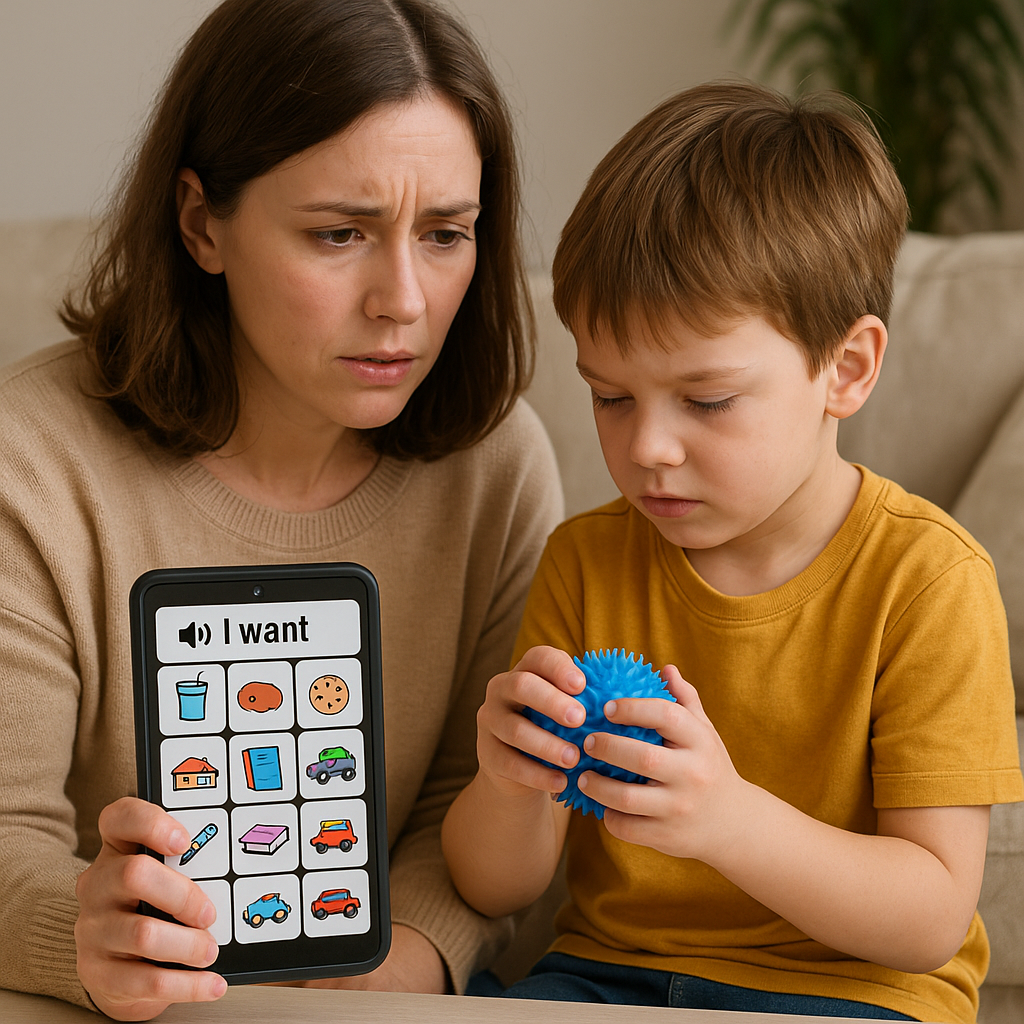
From Exhaustion to Balance: How Autism Parents Can Lighten Their Load
Every morning, parents of children with autism face a familiar cha...
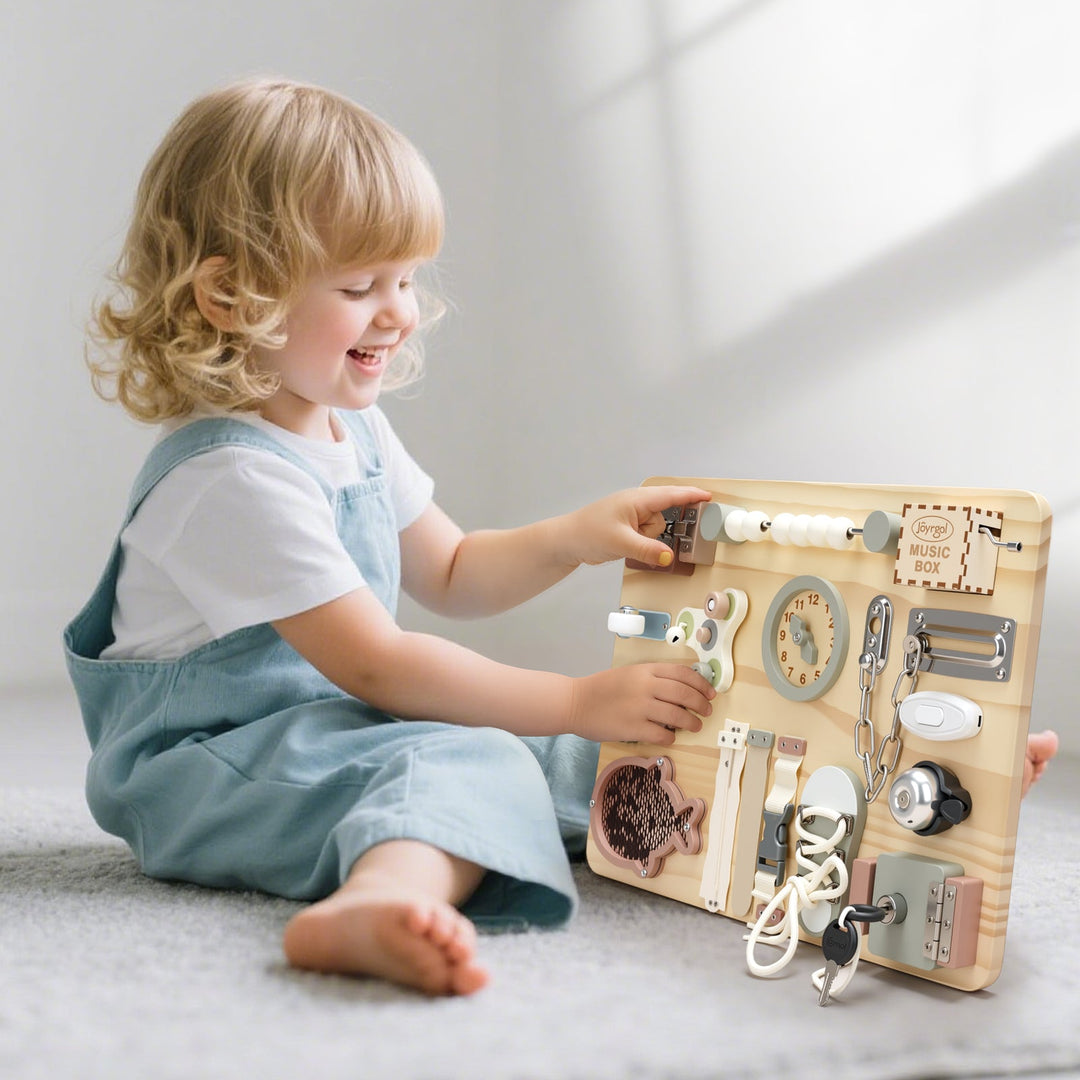
What Makes a Montessori Toy “Montessori”? The Essential Guide for Parents
In recent years, “Montessori” has become a buzzword in the toy ind...

Travel Guide for Children with Autism: Tips & Practical Advice
Travel is more than just moving from one place to another. It’s an ...
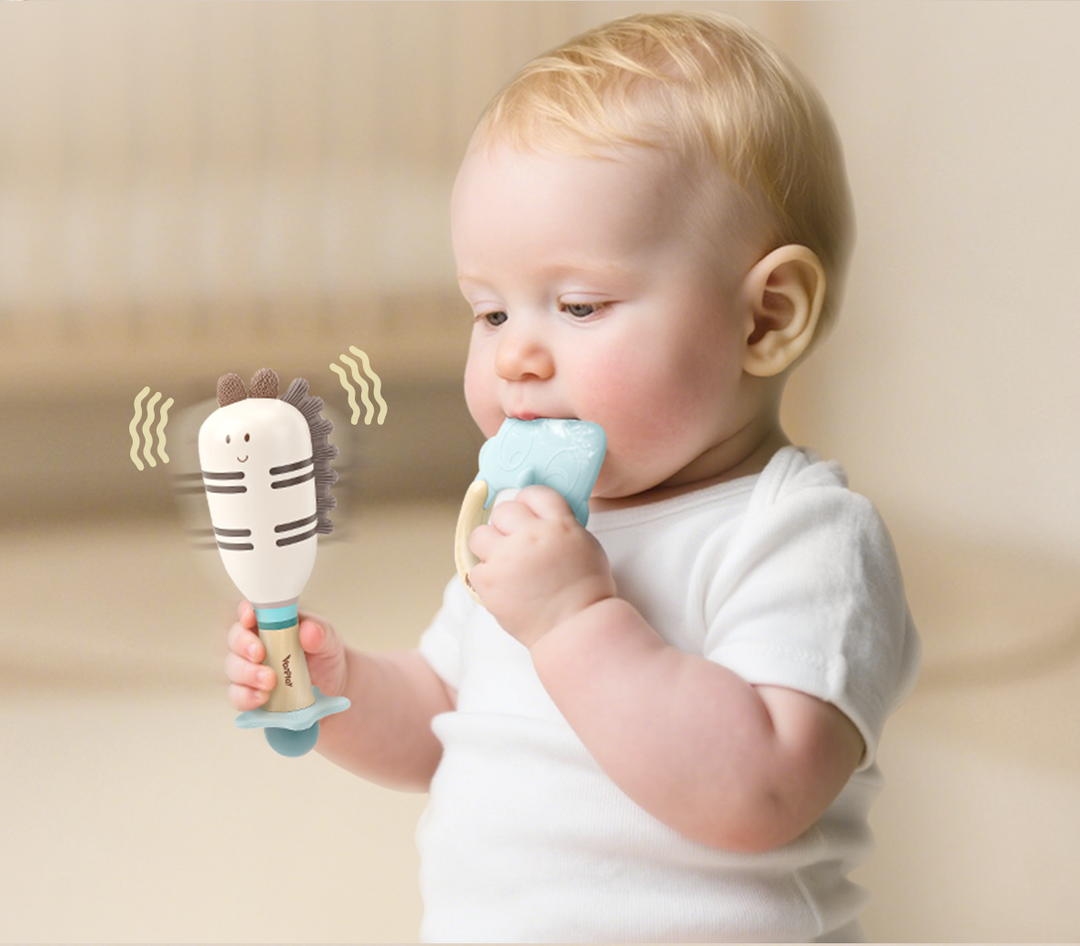
Top Sensory Toys for Kids with Autism to Ease Daily Routines
Parenting a child with autism is a journey filled with love, resil...
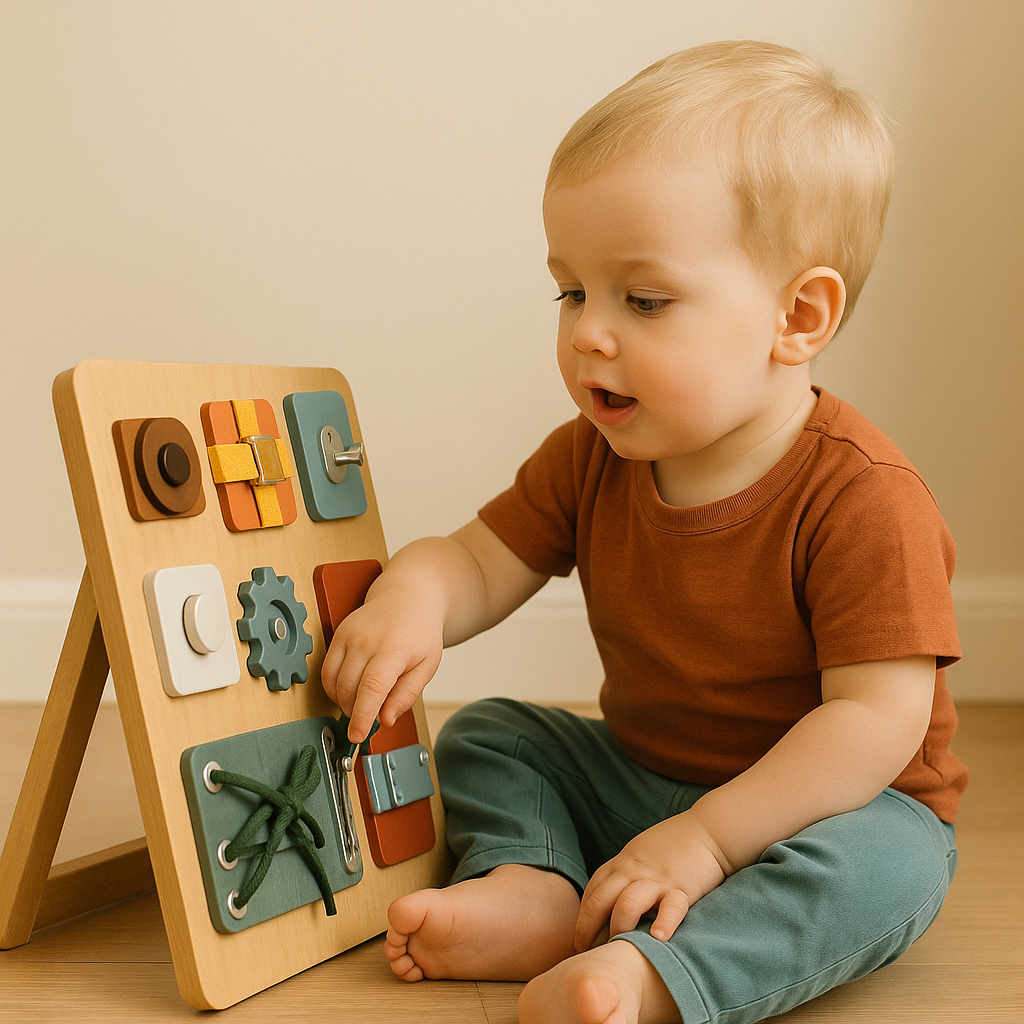
Can Montessori Toys Help with Speech Development? A Parent’s Guide
When your toddler is learning to talk, every giggle, babble, and f...
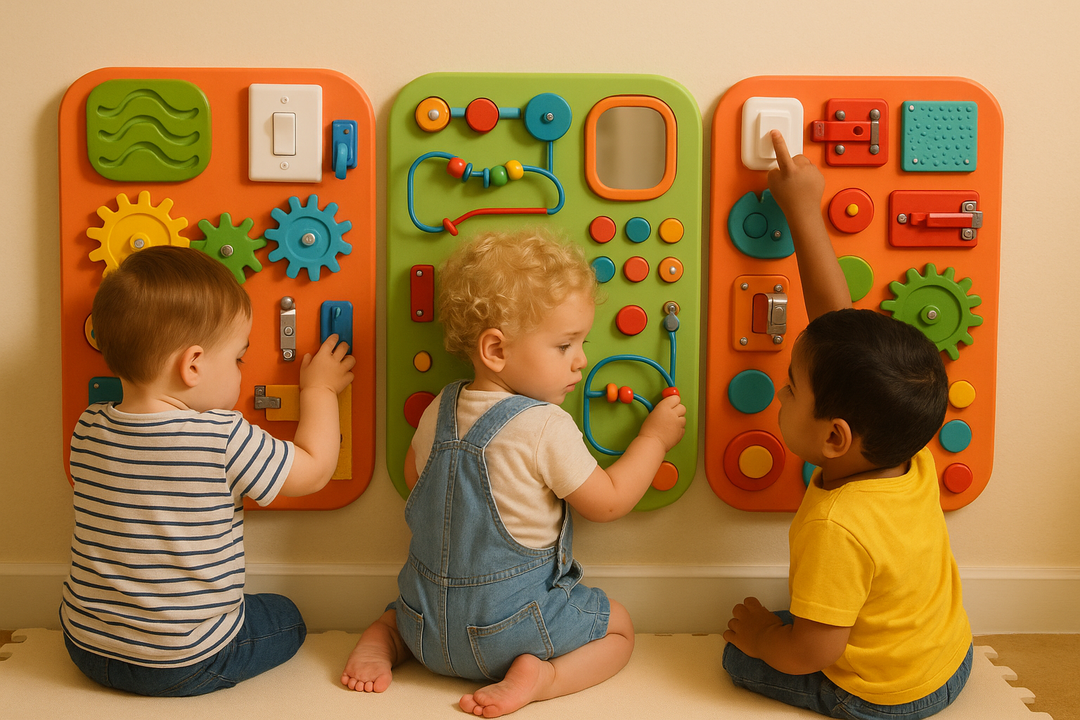
The Best Wooden Toys for Outdoor Activities This Autumn
Integrating autumn-themed wooden toys into your child's playtime is...
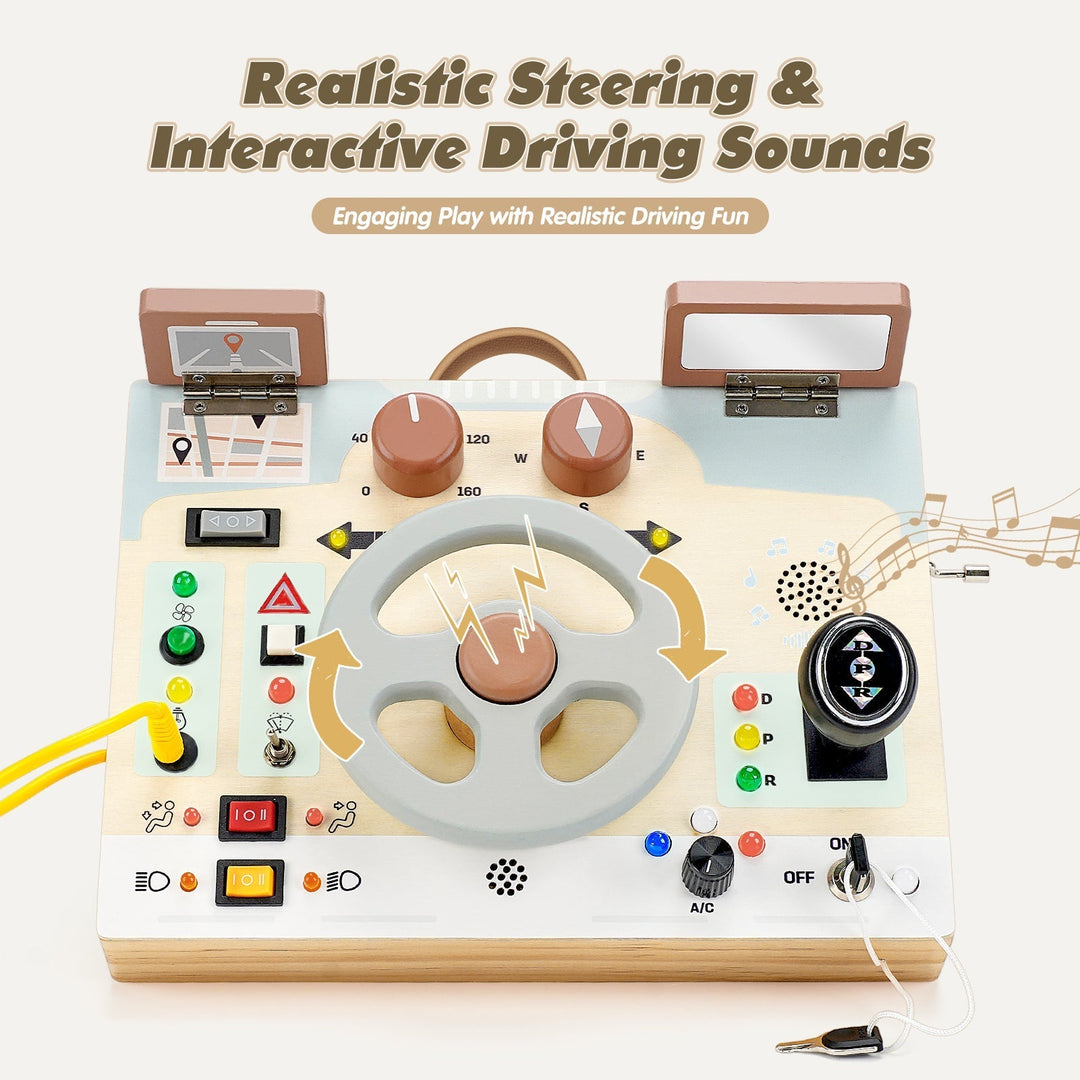
How a Montessori Busy Board is Helping Child Develop Key Skills
As parents, we’re always on the lookout for ways to keep our kids ...
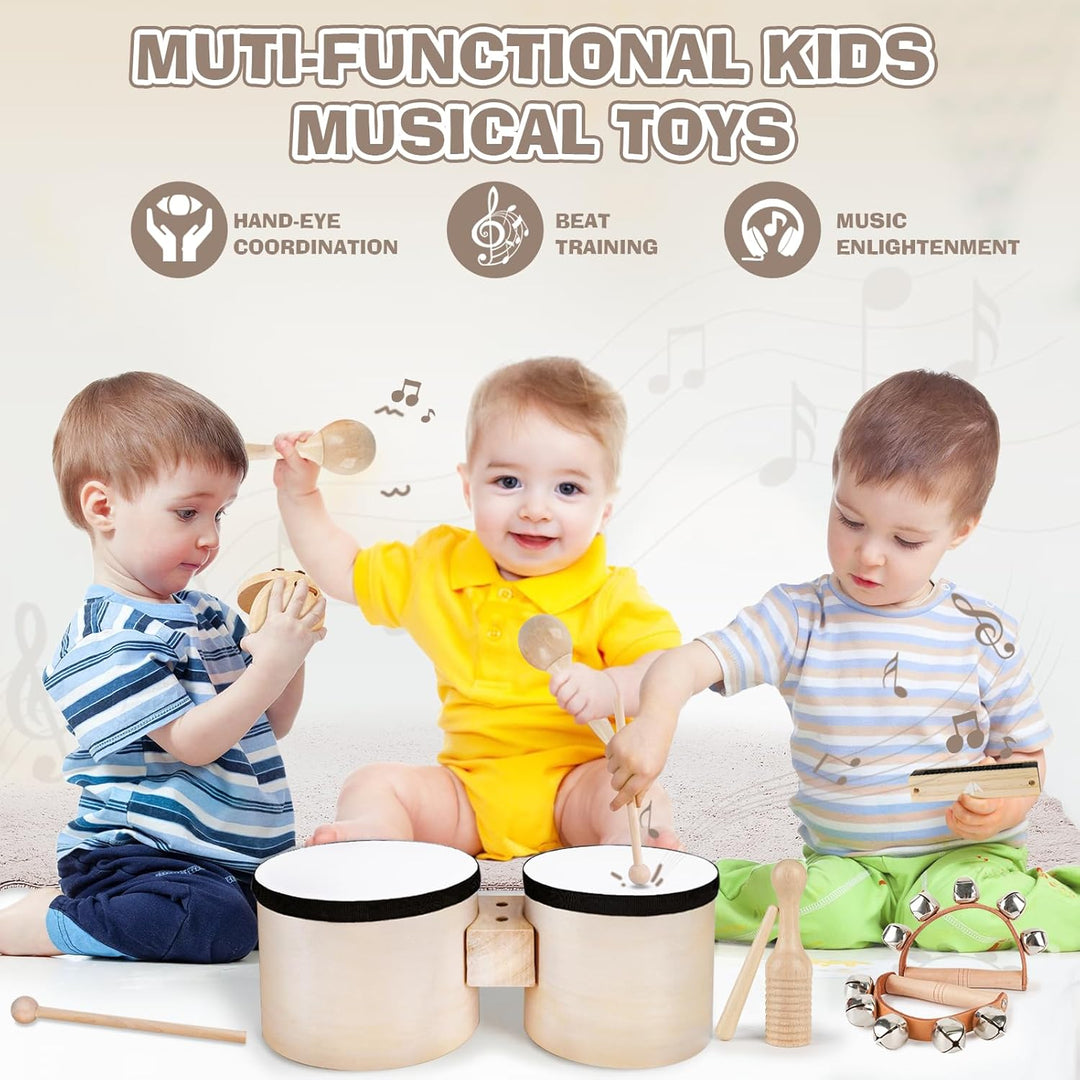
Sensory-Safe Sounds: A Parent’s Guide to Choosing Calming Music Toys
Music plays a significant and versatile role in supporting individ...
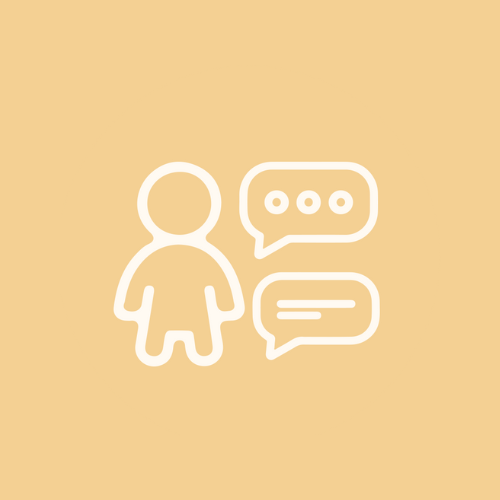
The Importance of Speech, Language, and Literacy in Shaping a Child's Future
From the first babbles to full sentences, a child’s language develo...
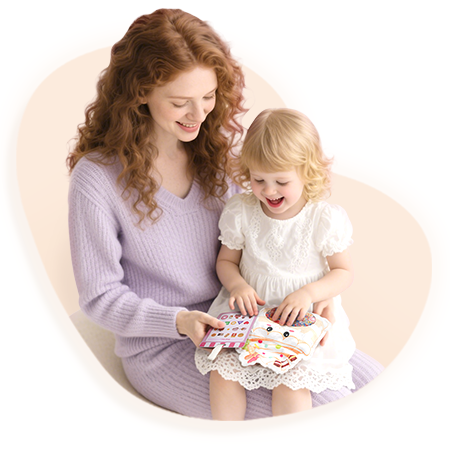
How Joyreal AAC 2.0 is a Game-Changer for Families Facing Autism Communication Challenges
Autism Spectrum Disorder (ASD) is a complex neurodevelopmental cond...

















